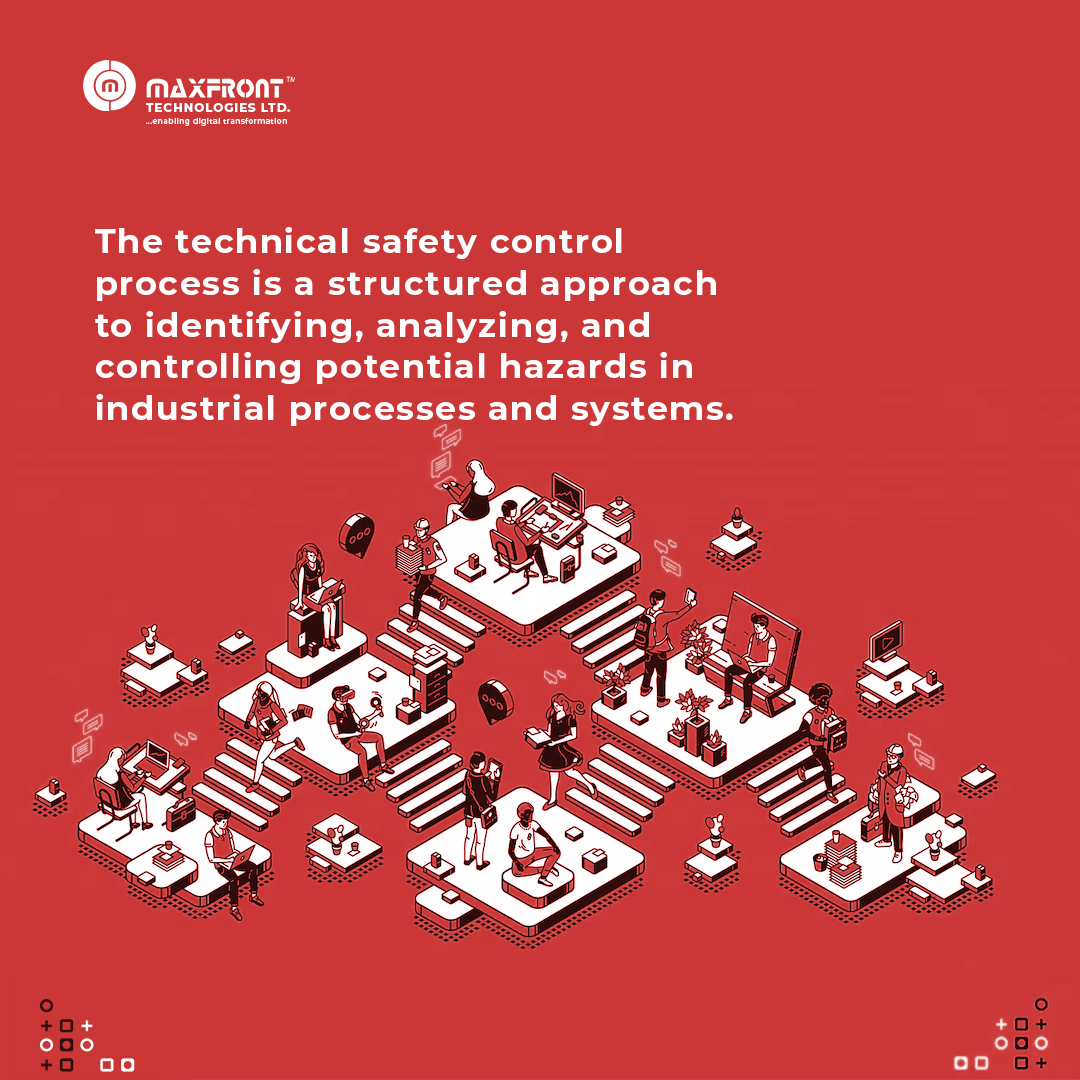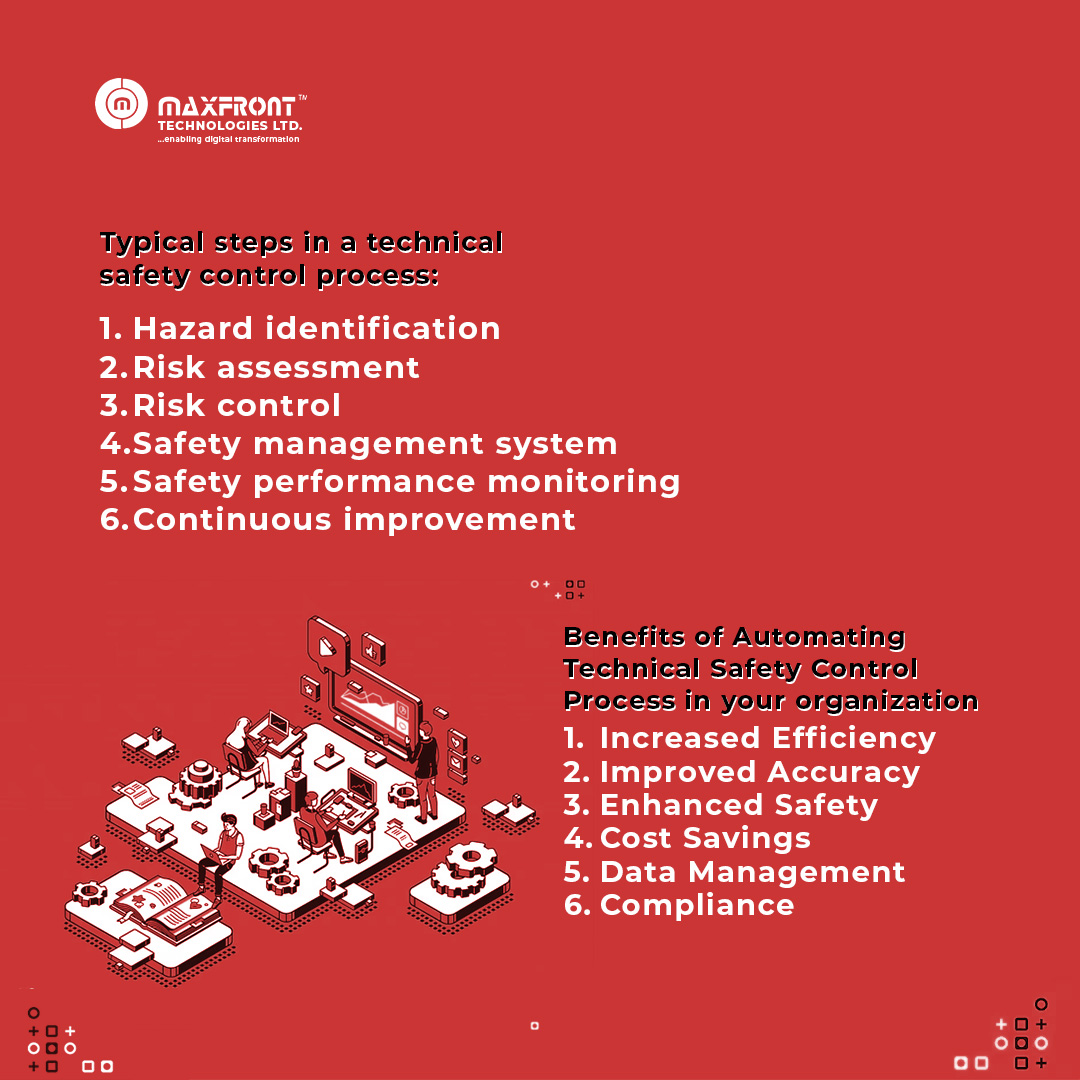
Technology is the application of scientific knowledge, tools, and techniques to solve problems, create efficiencies, and improve quality of life. Technology is crucial in an organization’s Technical Safety Control (TSC) process. TSC is a systematic approach to managing and controlling the technical risks associated with operating industrial facilities, such as chemical plants, refineries, and power plants. The TSC process involves identifying, assessing, and controlling technical risks to ensure the safety and reliability of the facilities and implementing control measures to mitigate or eliminate them. It is essential in various industries, such as engineering, manufacturing, construction, transportation, and healthcare.
The technical safety control process is a structured approach to identifying, analyzing, and controlling potential hazards in industrial processes and systems. It ensures that equipment and processes design, construction, operation, and maintenance are safe and reliable.

Here are the typical steps in a technical safety control process:
- Hazard identification: This step involves identifying potential hazards associated with the process or system. Hazard identification can be made through various methods such as HAZOP (Hazard and Operability Study), FMEA (Failure Mode and Effects Analysis), and PHA (Process Hazard Analysis).
- Risk assessment: Once the hazards are identified, the next step is to assess the risks associated with each threat. The risk assessment process involves determining the likelihood of the danger occurring and the severity of its consequences.
- Risk control: This step involves implementing measures to control the risks identified in the risk assessment process. This may include redesigning the process or system, implementing safety devices or equipment, or developing standard operating procedures.
- Safety management system: A safety management system (SMS) is a comprehensive system that includes policies, procedures, and practices for managing safety. An SMS ensures that all aspects of safety are organized systematically and coordinated.
- Safety performance monitoring: This step involves monitoring the performance of the safety control measures implemented in the process or system. Safety performance monitoring helps identify potential hazards not identified during the initial hazard identification process.
- Continuous improvement: The final step in the technical safety control process is to continuously improve the process or system’s safety performance. This involves implementing changes to the process or system based on the results of the safety performance monitoring.
Technical safety control is an essential aspect of facility development projects and modifications. It involves identifying potential hazards and implementing measures to mitigate them to ensure the safety of the workers, equipment, and the environment. Automation can improve the effectiveness and efficiency of technical safety control for facility development projects and modifications.
Technology can be used to automate the technical safety control process in several ways, including:
- Sensor-based automation: Installing sensors in equipment and systems can automate detecting anomalies and faults. These sensors can be programmed to alert technicians when an issue arises, or they can be integrated with automated control systems to make real-time adjustments and prevent accidents.
- Computerized Maintenance Management Systems (CMMS): CMMS can be used to automate maintenance schedules and procedures. This software can track maintenance requirements and schedules, send automated alerts when maintenance is due, and generate reports on the status of equipment and systems.
- Predictive analytics: Predictive analytics uses machine learning algorithms to analyze data and predict when equipment failures are likely to occur. By predicting failures before they happen, technicians can take preventative measures to avoid accidents and downtime.
- Robotics: Robotics can be used to perform tasks that are dangerous for humans, such as inspecting equipment in hazardous environments. Robotic systems can be programmed to inspect, collect data, and identify issues needing attention.
- Augmented Reality (AR): AR technology can be used to enhance the safety control process by providing technicians with real-time information about equipment and systems. AR devices can display visual overlays that provide information on equipment status, maintenance procedures, and safety protocols, helping technicians to work safely and efficiently.
Benefits of Automating Technical Safety Control Process in your organization
Automating the technical safety control process can bring various benefits to your organization, including:
- Increased Efficiency: Automation can streamline the safety control process, reducing the time and effort required to complete safety assessments, analyses, and tests. This can lead to increased efficiency and productivity.
- Improved Accuracy: Automation can reduce the risk of human error and ensure that safety control procedures are followed consistently and accurately.
- Enhanced Safety: Automated safety control systems can detect and respond to safety hazards in real time, reducing the risk of accidents and injuries.
- Cost Savings: Automating safety control processes can reduce the cost of safety assessments, analyses, and tests. It can also help organizations avoid the cost of safety incidents and regulatory fines.
- Data Management: Automation can help your organization manage safety data more effectively, providing insights into safety risks and trends that can improve safety performance over time.
- Compliance: Automated safety control systems can help organizations comply with safety regulations and standards, reducing the risk of legal and reputational consequences.
The technical safety control process is a comprehensive approach to managing safety in industrial processes and systems. It helps to identify and control potential hazards, minimize risks, and ensure the safety of employees and the public. Your company can improve safety by using technology to automate the technical safety control process. It can also help reduce costs and increase efficiency, making it an attractive option for your company.